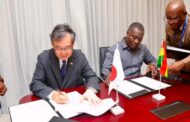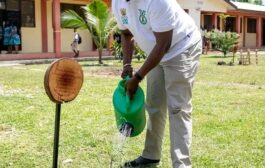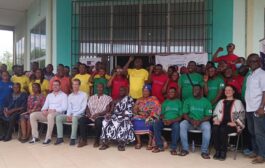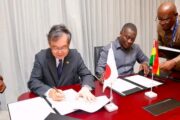Linguistics experts particularly those within the applied linguistics fraternity as well as traditional court linguists engage the services of this expression to usually place weight on an exhibition of appreciation towards a sender.
This expression is suitably adjusted to a symbiotic relationship where a mutually beneficial deal occurs. In other related meanings, it is an expression whose linguistic power is limited to circumstances of ” you scratch my back I scratch your back in return”.
First of all, how are these two creatures found in the expression get reconciled to build that interesting language? In a mutually exclusive analysis of the two key elements (siw) “Akuapem ” (esie) Asante is in reference to the ant hill known in the Ga parlance as gbɔtsui”.
Traditionally, the spiritual powers held by the ant hill as an inherent nature can only be better expressed by spiritualists.
Kagya on the other side is known by herbalists as being highly potent in curing certain illnesses.
They are usually found on top of the ant hill. Again, it is vertically challenged in nature: a condition that triggered its companionship with the ant hill as will be revealed in the successive lines of this piece write-up.
Having been fed with this brief information with respect to the two linguistic elements relative to the expression under treatment, it is imperative to break the myth surrounding the circumstances that led to the symbiotic relationship.
According to oral tradition through folktales, the anthill once met the kagya plant and bitterly complained of how it had been at the mercy of the scorching sun.
From the point of the anthill, it had been dangerously exposed to the sun and asked if the kagya plant could help it and offer some solution to have some level of respite in terms of shelter.
According to the narrative, the kagya plant had similarly been struggling to get its fair share of the drops of rainwater. Again, it is not well recognised since it had been overshadowed by trees that are vertically advantageous.
Two heads are better than one indeed: thus, the two “elements ” came to the realization each of them had what it takes to compensate for the other’s weakness. Consequently, the kagya plant decided to perch on top of the anthill so it could relieve the anthill from the scorching sun and another unpleasant occurrence.
The anthill in return agreed to allow the kagya to sit on the topmost position of its place of location so it can be easily recognised. What is more, the struggle to gain access to rainwater is tremendously reduced.
The above findings form the linguistic circumstances that generated this expression. On a winding up, suggestively the optimum context where this particular expression can sit comfortably is a ” give and take relationship is created. In the absence of the above contextually prescribed circumstance, the use of the expression might be tantamount to untimely application. One can also describe it as akin to penetration without fluid.
Will you be on the side of others who might link an argument to the school thought that language is dynamic and therefore the use of the expression must not be strictly attached to the above circumstantial advice? Or it must religiously follow the contextual substance which triggered its birth. Kyerɛ w’adwene.
Source: Mybrytnewsroom.com/Kwabena Nyarko Abronoma




















































